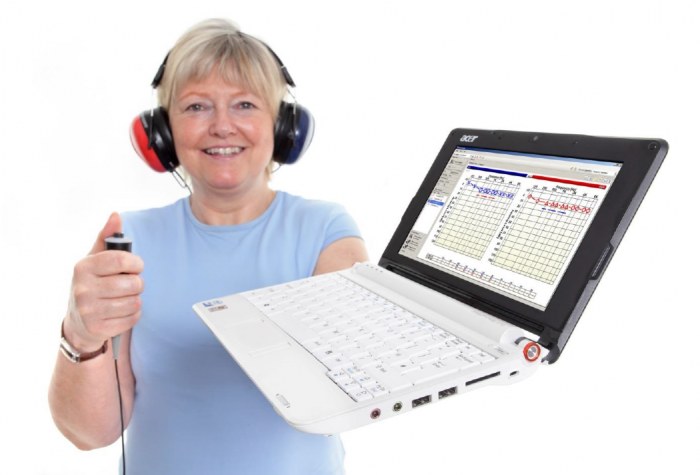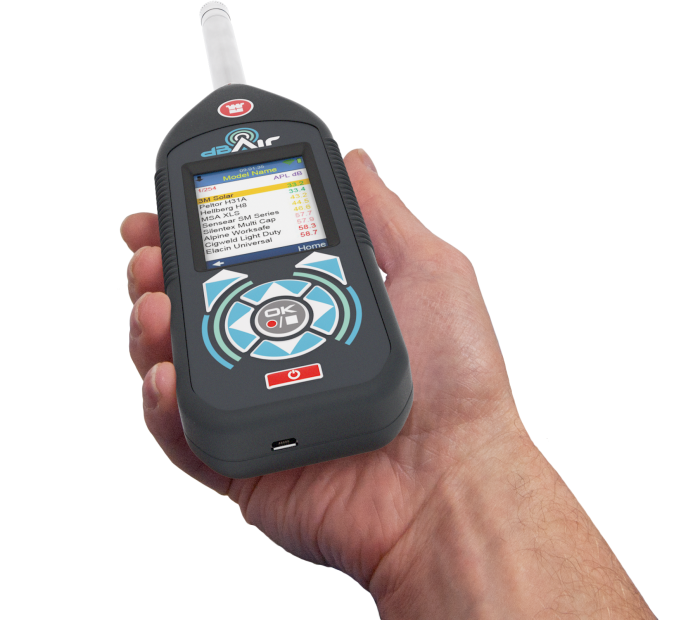7 Steps to Compliance with the Noise Regulations
Reach Compliance With the Noise Regulations 2005 with our FREE Guide – click here to download the full guide free
Carrying out a noise regulations risk assessment can be a daunting task – especially if you’re new to the subject. It can seem that the more you read, the more confused it can all become. It is for that reason that we have decided to put together this simple guide covering 7 steps to consider as part of a successful Noise at Work Risk Assessment.
The real reason for doing any form of noise assessment is actually about trying to prevent people who work for you going deaf! And it’s often worth coming back to that as it can make everything seem a little simpler.
What you really need to do is implement a ‘hearing conservation programme’, but more of that later – the first step is to get a decent risk assessment so you can decide what to do next.
1. Health Surveillance

Audiometry for the Noise Regulations
There is no doubt that to run an effective and efficient hearing conservation programme without breaking the budget or having to spend huge amounts of time sifting huge amounts of data, then health surveillance holds the key. You are still going to have to run a thorough hearing screening programme, but if you use the information wisely, you can eliminate Noise Induced Hearing Loss from your business entirely!
2. Setting out your Risk Assessment
The first essential step of a noise risk assessment it to start by making observations. This forms the basis of the HSE guidance and will lead the rest of your assessment. Following this you will then be in a position to decide upon the next steps and what will be needed. The following should be considered during your Risk Assessment
- Who’s hearing checks show early signs of Noise Induced Hearing Loss (NIHL)?
- Where are the potentially noisy areas in the workplace?
- Who is working in them or visiting, and for how long?
- Do you have to shout in those areas to be heard?
- Is there any potentially noisy mobile plant being used by employees?
- Is any hearing protection in use, by whom and what is it?
3. Measurement and Instrumentation
You actually might not need to measure anything at all! And that might sound strange coming from someone who, amongst other things, makes a living out of selling sound measuring equipment! The truth is, if you can be confident that there is no discernible noise in your workplace, then so long as you say so in your risk assessment, you are covered.

Unfortunately, it’s often not quite that straight forward. Firstly, you might well feel confident that the noise isn’t a problem, but are you sure there isn’t something you missed? Workplace noise can vary considerably at different times of day or week or during different processes. Secondly, there is the ever-present threat of claims, and the simple fact here is that if you haven’t taken measurements of the workplace and at least tried to figure out who is exposed to what, then you won’t stand a chance of successfully defending or mitigating that claim.
4. Hearing Protection Assessments
The other task you are likely to want to undertake as part of a noise at work survey is to look at hearing protection, whether to assess existing hearing protection already in use, or to establish what kinds of hearing protection might be suitable for a given job. There are 3 ways to do this and the measurements you take will be determined by what you decide to do.
- SNR – Single Number Rating method
- HML – High, Medium and Low (Frequency) method
- Octave Band – Using Octave Band attenuation data
5. Comparing the numbers with the law
The Control of Noise at Work Regulations 2005 (UK Gov’t, 2005) sets out 3 action values, each with two numbers to look out for
Lower Action Value
- Daily exposure for 8 hours (Lep’d) 80dBA
- Peak Sound Pressure Level (Pmax) 135dBC
Upper Action Value
- Daily exposure for 8 hours (Lep’d) 85dBA
- Peak Sound Pressure Level (Pmax) 137dBC
Exposure Limit Value
- Daily exposure for 8 hours (Lep’d) 87dBA
- Peak Sound Pressure Level (Pmax) 140dBC
There are a couple of really important points to note about these levels. Firstly, the Daily exposure figures are just that, they are only applicable if a person is exposed to that level (or the equivalent continuous level – Leq) for a full 8 hours. So this is not just the number you see on the display of the sound meter, it has to be the level that they would have for the full day. There is a simple calculator on the HSE website that can help you work this out http://www.hse.gov.uk/noise/calculator.html
6. What Information Should You Record?
This list of elements you should include in your documentation comes largely from the HSE guidance so if you want to impress the inspector next time he’s round, then you’d be well advised to make sure all of this is included
- You first need to identify where there may be a risk from noise and who is likely to be affected.
- You need to figure out your employees’ exposures, and compare the exposure with the exposure action values and limit values.
- The information should include what you need to do to comply with the law, eg whether noise-control measures or hearing protection are needed, and, if so, where and what type.
- You must identify any employees who need to be provided with health surveillance and whether any are at particular risk. This is where audiometry comes into its own and can be used to amazing effect with a little care and attention to detail. Remember, getting this part right can be the key to eliminating Noise Induced Hearing Loss in your organisation!
7. Recommendations and Noise Control
How to make recommendations?
Your recommendations should fall out of your risk assessment and will include any measures your company should take to comply with the law. It is a very good idea to extend this to any measure you could take as an organisation to ensure you can be more protected from civil claims!
Noise Control
If you find the results of the risk assessment show problems in the workplace that need resolving, then you may well have to carry out some noise control measures. This could be something as simple as effecting repairs to your pneumatic lines, exhausts and nozzles or it may be more complex involving engineering solutions to reduce the noise from plant and machinery at source.
This is a brief introduction to our E-Book, “7 Steps to Noise at Work Compliance”, which teaches you how to reach compliance with The Control of Noise at Work Regulations 2005 in 7 Simple Steps.
-

Castle Products
CLICK HERE FOR
Information, technical data, images and pricing of all Castle Group Ltd. products -

Product Rental
CLICK HERE FOR
Hire the best equipment at a fraction of the purchase price -

Calibration Lab.
CLICK HERE FOR
Calibration and repair services from Air Samplers to Vibration Meters -

Training
CLICK HERE FOR
World class safety and environmental courses. On your site or our 4* training facility -

Consultancy
CLICK HERE FOR
Employ our expertise for both simple and more demanding issues.












